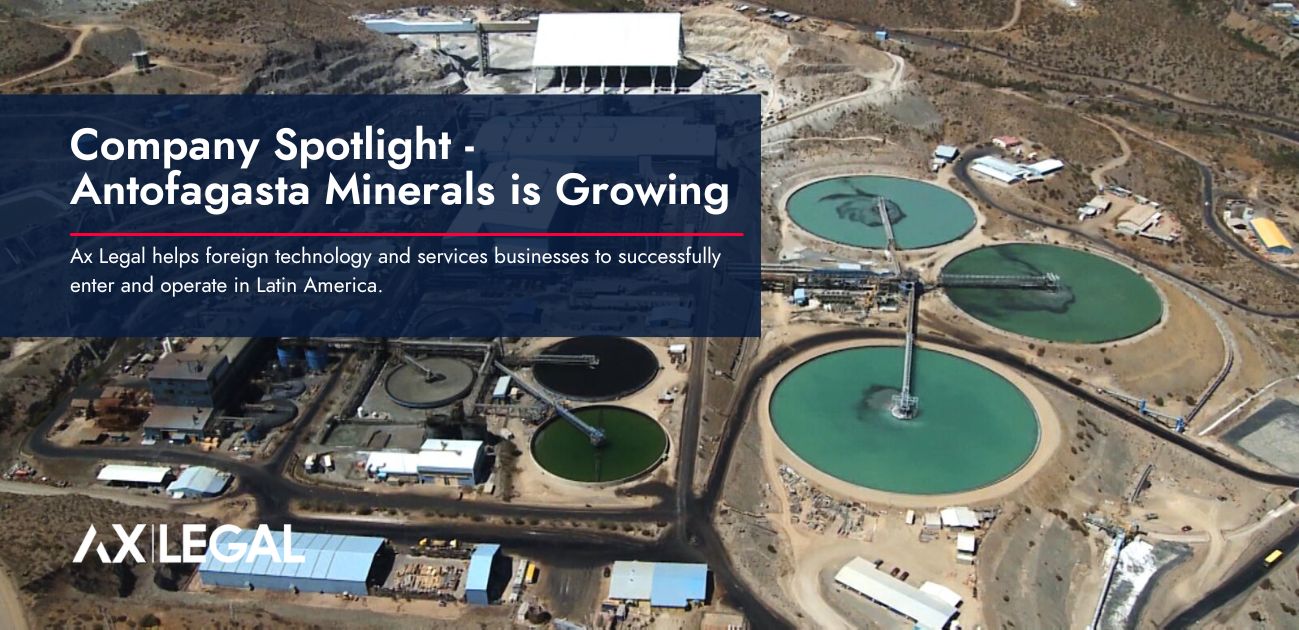Anglo American – Latin American Operations
BHP’s near-USD$40 billion bid to take over its UK rival Anglo American has received plenty of attention as one of the largest mining deals on record.
The offer was quickly rejected for several reasons by Anglo’s shareholders, but analysts understand that the strategy of BHP is to have more exposure to copper.
The reality is that the world is facing a copper crunch. Copper will be needed in the coming years for building out renewable energy generation, upgrading power grids, and for electric cars. Although the prices of copper have remained stable, analysts are confident that prices will increase in the second half of this decade.
This means that miners have two choices – they can develop their own mines or try to buy the assets of other companies. The reality is that building a new copper mine, from exploration to production, can take up to 16 years. In addition, the costs, and risks of building new mines has increased over the last two decades.
This takes us to the second option, which is to buy the assets of other companies. This is why BHP’s offer for Anglo American is quite interesting. Although Anglo is struggling right now, the company has a significant portfolio of copper mines that could drive BHP’s growth in the near future.
There is no question that Anglo American’s operations in Latin America are a huge part of why it has sparked the interest of other miners who are looking to increase their exposure to copper before the price increases.
We take a deeper look at Anglo American’s Latin American operations which are based in Chile, Peru, and Brazil.
Chile
Anglo American has been in Chile for over 20 years. The company expects Chile to contribute 430,000-460,000t of copper from its operations in 2024. While that is a significant amount of copper, the reality is that production is falling in Chile from 2023, when it was 507,200t. The decline in production is mainly due to lower grades but Anglo has several brownfield projects and initiatives that it will pursue to maintain production in the coming years.
Los Bronces
- The project is part of Anglo-American Sur, which is majority owned by Anglo American (50.1%). The Codelco-Mitsui consortium (29.5%) and Mitsubishi (20.4%) are the other stakeholders.
- Los Bronces has seen the largest production drop due to lower grades and rock hardness. Production has been reduced by 20% over the last 2 years. Los Bronces produced 215,500t in 2023, down from 270,900t in 2022.
- Los Bronces has two projects that will help recover production and ensure the mine can operate well into the future.
- The first project is US$1.1bn project involving tailings removal at the Pérez Caldera dam and optimizing water supply to the mine. The project will enable a supply of 500l/s of desalinated water and increase delivery capacity in the recycled water system to 1,200l/s from 1,000l/s.
- The second project is the US$3.3bn LBI initiative, which is meant to gain access to better ore in the open pit and at the underground level. That project has been facing opposition since 2019.
- Anglo American will continue to conduct works related to adapting the open pit, commissioning of which could be completed in 2027, while advancing with a prefeasibility study for the underground expansion that should be presented in 2025. Executives believe the underground won’t be operational until 2030.
- The latest news though is that Anglo board decided to put the oldest of the processing plants, which accounts for around 40% of production, on care and maintenance from mid-2024.
- That decision is intended to reduce costs and cut down on supply of water that is currently brought in by truck until the desalination plant is complete.
Collahuasi
- Anglo has a 44% stake in Collahuasi, which is also partly owned by Glencore and Mitsui.
- Collahuasi has been a good asset, it produced 252,200t from Anglo’s share of the project in 2023, compared with 251,100t in 2022.
- Its last project already in construction and near completion, was a US$3.2bn investment, that optimized the concentrator plant, as well as the production of cathodes through bioleaching rather than regular leaching to process 35,000t/d of mixed sulfide and oxide ore. In addition, It involves the construction of a desalination plant and related infrastructure.
- Anglo will allocate US$678mn in 2024 to ensure the start-up of the desalination plant in 2026 and advance studies that seek to add 25,000t/y of copper to its attributable production between 2025 and 2028.
- It also has plans to install a fourth processing line and expand the mine to add another 150,000t/y to output with permits expected to be issued in 2027 according to the company.
El Soldado
- El Soldado is Anglo’s smallest operation in Chile. Output declined to 39,500t with the mine originally planning to close in 2028.
- Although a new operational continuity project was presented which received environmental approval in 2023. The new project will extend the useful life of the mine by ten years — from 2027 to 2037.
- The new project includes the construction of a bulk ore sorting plant, developing a new pit, and other related infrastructure that will be required.
Peru
- Anglo American entry into Peru started with a bang with the construction of the US$5.3bn Quellaveco mine. One of the newest and most technology advanced copper mines to be built in the last 5 years.
- Quellaveco is 60% owned by Anglo American, while Mitsubishi Corporation has the other 40%. It started operations in September 2022, and is now considered Peru’s foruth largest producer.
- Quellaveco completed its ramp-up in 2023, producing a total of 319,000t of copper last year, up from 102,300t the previous year.
- Quellaveco is Anglo American’s first 100% digital mine. will have a modern integrated operations center, automated trucks and drills, and host of other technologies that were incorporated into production processes.
- Anglo also has other exploration project advancing in Peru. Its Almira copper-gold project in Tacna region had 10 diamond drilling platforms operating. In addition, the company is waiting on exploration permits for other properties it would like to drill on.
Brazil
- Brazil is a little different for Anglo since the companies exposure is mainly related to nickel and iron ore.
- For its nickel mines, it has Barro Alto, Codemin and Niquelândia. Last year, it produced 40,000t, up 1%, with guidance for this year at 36,000-38,000t. Nickel is facing tough winds right now.
- For its iron ore mines, the Minas-Rio and Serpentina operations are quite important. Minas-Rio produced 24.2Mt in 2023, while Serpentina has an annual production capacity of 26.5Mt.
- Anglo will spend US$782mn to increase tailing storage capacity at its Minas-Rio projects and it recently signed an agreement with Vale to become the new operator of Serpentina.
Conclusion
BHP has been very public about its strategy to increase its exposure to copper. As we have seen with its acquisition of Oz Minerals, they are willing to pay for a company that has the right assets.
Anglo is a great acquisition target since it is currently facing troubles, which has weighed on its share price. Both BHP and Anglo have copper mines in Chile and Peru, metallurgical coal mines in Australia, and iron ore operations in Brazil, where some savings could be targeted through synergies.
The reality for the world though is that BHP’s strategy to acquire existing production does nothing to increase copper output for the eventual demand that will come with electrification. It simply allows BHP to have more exposure so that when prices rise, it can be well positioned to benefit.
From a Latin American perspective, a deal such as this one demonstrates just how important the region will become to the copper market as companies look to either purchase existing assets or look to develop their own. There is no doubt that the project pipelines in Chile, Peru, and more recently Ecuador and Argentina will need to be developed if there is any chance that supply can keep up with future demand of copper.
Ax Legal helps industrial technology, engineering, and service companies to navigate the legal and commercial aspects of operating their business in Latin America. With deep knowledge of the industrial and natural resource sectors, we provide actionable and practical advice to help streamline our clients’ entries into Latin America, improve how they operate in the region, and to protect their interests.
Over the years, our team of legal and commercial advisors have developed a track record of working with companies of all sizes from Australia, Canada, the U.S., and Europe. The one common factor that connects our clients is that they are leaders in their field, providing innovative technologies and services to the industrial sectors.
To better understand how we can support you in the Region, please contact Cody Mcfarlane at cmm@ax.legal




 Santiago
Santiago Sydney
Sydney Lima
Lima